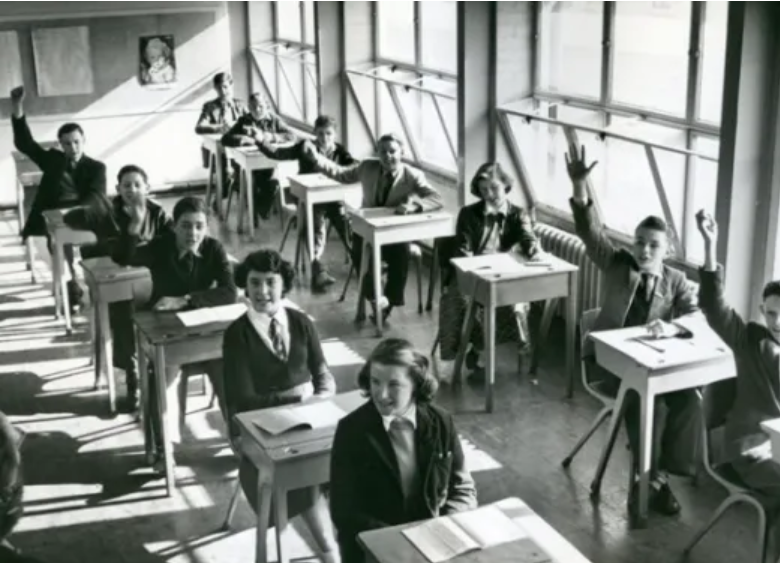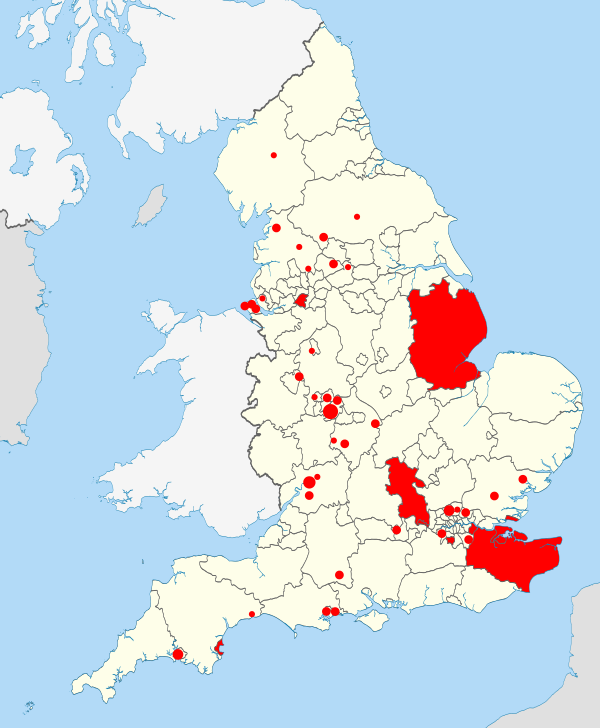The 11+ is a relic of the unfair and discredited system of education which was abandoned in most of Britain over fifty years ago.
Dividing Children

In 1944, secondary education in England was organised into three separate streams. Grammar schools would educate the children who were regarded as the most intelligent and were expected to become the cleverest adults; technical schools would educate children who were less academic but had technical aptitude; ‘less intelligent’ children would be sent to secondary modern schools. In the event, few technical schools were established and almost every child went to either a grammar or secondary modern school.
An examination was devised to separate children into those who were designated as ‘bright’ and those who were regarded as ‘less intelligent’. This examination was taken when children reached ten or eleven and was subsequently called the 11+. It was largely based on an IQ test because, at that time, it was believed that a person’s intelligence was fixed early in life and that an IQ test taken at 10 or 11 could establish the level of a person’s lifetime intelligence.
The ‘pass’ mark for the 11+ was not fixed but depended upon the number of places available in local grammar schools. This led to considerable variations between different parts of the country. In Nottinghamshire, for example, at the beginning of the ‘new’ system, only 10% of children were able to go to grammar school, while in parts of South Wales as many as 40% of children ‘passed’ the 11+. As new grammar schools were opened, these figures fluctuated but the best estimate is that, overall, around 20% of children attended grammar school up to the end of the 1960s. It should also be noted that, had the ‘pass’ mark for the 11+ really been fixed at a predetermined level, at least two thirds of grammar school pupils would have been girls. To prevent this happening, the marks achieved by boys were increased.
This system of segregated education always had its critics and during the next twenty years it became more and more unpopular. There was no convincing evidence that either the ‘more intelligent’ or ‘less intelligent’ children benefited from being educated separately. A system which decided a child’s future education on the basis of a one-off examination, taken at such a young age, felt inherently unfair. Moreover, the use of the 11+ meant that about 75%-80% of British children were, in effect, being branded as ‘failures’ before they had even reached their teenage years. This seemed brutal and repugnant.

The scientific basis of the system was also challenged. Fresh neurological research demonstrated that the capacity of the brain is not, in fact, fixed at age 10 or 11 but can develop well into adulthood. This revelation explained why, in practice, the 11+ proved to be an unreliable guide to future intelligence. As a result, doubts began to be raised about the much-publicised research of Cyril Burt, the geneticist who had provided what he claimed was strong scientific support for the 11+.
After Burt’s death, this scepticism was found to be justified. Detailed examination of his work showed that Burt had actually falsified the results of his research. During the investigation, attempts were also made to interview the assistants whom Burt had named as part of his team. The search was in vain: the ‘assistants’ have never been found and it is now widely believed that Burt had invented them to give spurious validity to his research.
By the mid-1960s both major political parties agreed, although with different levels of enthusiasm, that the system which separated children and educated them in different types of secondary schools should be replaced. Circular 10/65, issued by the Labour government of Harold Wilson, ‘invited’ every local council to submit plans for reorganising its secondary school provision ‘along comprehensive lines’. Most Local Education Authorities (LEAs) supported reform and complied but the absence of compulsion in Circular 10/65 enabled other LEAs to resist, in which they were encouraged by a pro-grammar school lobby with many supporters among the Conservative opposition.
When Labour lost the 1970 election, the new Prime Minister, Edward Heath, immediately rescinded Circular 10/65 but did not prevent those LEAs who wished to introduce comprehensive secondary schools from continuing with their plans. However, when Labour was once more able to form a majority government in 1974, only 62% of secondary school children were attending comprehensive schools. Wilson tried to get reform back on track by passing the 1976 Education Act but, aware of the problems of working with a very small majority, he allowed the Act to be so full of exceptions and ‘loopholes’ that LEAs who wished to retain all or some of their grammar schools found it easy to do so.
The anomaly

By the time Margaret Thatcher became Prime Minister in 1979, most LEAs had complied with the 1976 Act and, early into her premiership, the proportion of secondary school children attending comprehensive schools had risen to its present level of 90%. However, a small number of LEAs had resisted and managed to hold onto the 11+ and retain grammar schools. Typically, it was the old and prestigious grammar schools which were retained, while more modern ones were converted into comprehensive schools, but a few LEAs managed to retain the entire early post-war system. Surprisingly, no subsequent Government has found the time or political will to end this extraordinary anomaly and complete the programme which had been initiated for such good reasons in the 1960s.
This explains why, although most of England, all of Scotland and all of Wales are fully comprehensive, the 11+ is still widely used in three English counties and to some extent in over thirty smaller authorities. So, more than fifty years after the intended reform, children living in those areas continue to suffer the disadvantage and damage of the old system. This is a serious problem. The pain of 11+ failure lasts a long time. Almost everyone who has ‘failed’ remembers the unhappy day when they and their classmates were divided into two groups, the successful few who could go to grammar school and the large number of ‘failures’ who were directed towards secondary moderns.
This extraordinary anomaly has caused other problems. Separating children at age eleven disrupts school admission systems and divides local communities.
